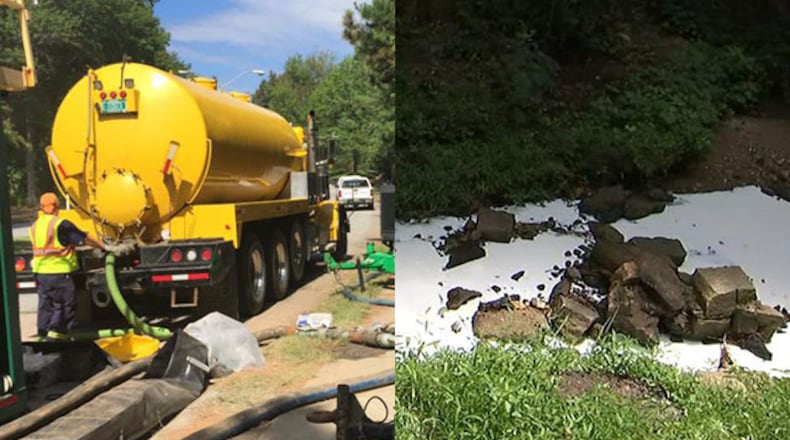Crews on Monday finished cleaning a creek that runs by Smyrna homes, more than a week after thousands of gallons of automotive fluid spilled from a nearby plant.
Some of the 25 residents in the Kenwood subdivision called authorities the morning of Aug. 13 saying that the creek behind their homes had turned milky.
Investigators found that 2,300 gallons of carburetor cleaning fluid leaked into the creek from Apollo Technologies, officials said. The business found that a gasket failure on a mixing tank, which has been taken out of service, and a breakdown in the spill retention system caused the leak.
The waterway is an unnamed tributary of Nickajack Creek.
"Samples now seem appropriate to cease any further cleanup at that site," said Bert Langley, director of compliance at the Georgia Environmental Protection Division.
He said staff removed 500,000 gallons of contaminated water from the creek and moved it to storage tanks at Apollo for disposal or treatment.
Langley said the leak killed as many as several hundred fish. He explained that the impact was great because the creek was so small.
"We were able to get to it quickly enough," he said. "It’s not like it reached all the way to the Chattahoochee."
Langley said there are many compounds in the fluid, but one of the more concerning ones was naphthalene, which he said is common in cleaners.
The Centers for Disease Control and Prevention says naphthalene smells like mothballs and can be toxic to humans in large doses.
Dawn Harris, a spokeswoman with the U.S. Environmental Protection Agency, said that recent rains in the Nickajack have decreased the levels of naphthalene.
Apollo posted a letter to the community on its website saying the company hired a consultant to help with the testing and another to help figure out how the spill happened, which includes interviewing employees.
"Our employees live and work in the community and so we know how important it is to remediate this and ensure that something like this never happens again," the letter reads.
About the Author
The Latest
Featured



